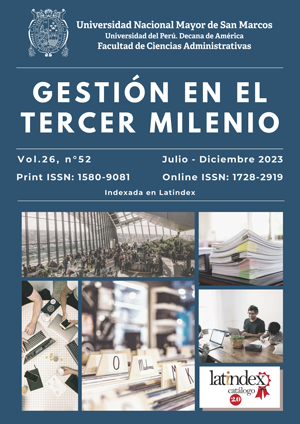Poverty in Peru: current approaches and the impact of public management
DOI:
https://doi.org/10.15381/gtm.v26i52.27076Keywords:
Poverty, Public investment, Public spending, Size, AssociationAbstract
The purpose of this paper is, first, to present a historical review of the main approaches that have dealt with poverty in its various manifestations, and then to analyze the Peruvian case in terms of the relationship or correlation between monetary poverty and that which can be measured by the Unsatisfied Basic Needs approach, and public investment, measured by the variable Gross Public Capital Formation, using the correlation coefficient as a central tool, establishing that there is a strong degree of inverse association between the implementation of sustainable public spending and poverty reduction, with results very close to 1. The main lesson that can be drawn is that it is necessary to sustain the implementation of public policies focused on different sectors that provide the best results in terms of poverty reduction rates.
Downloads
Published
Issue
Section
License
Copyright (c) 2023 José David Alarcón Huamaní

This work is licensed under a Creative Commons Attribution 4.0 International License.
THE AUTHORS RETAIN THEIR RIGHTS:
(a) The authors retain their trademark and patent rights, and also over any process or procedure described in the article.
(b) The authors retain the right to share, copy, distribute, execute and publicly communicate the article published in Gestión en el Tercer Milenio journal (for example, place it in an institutional repository or publish it in a book), with acknowledgment of its initial publication in the Gestión en el Tercer Milenio.
(c) Authors retain the right to make a subsequent publication of their work, to use the article or any part of it (for example: a compilation of their work, lecture notes, thesis, or for a book), provided that they indicate the source. of publication (authors of the work, magazine, volume, number and date).













